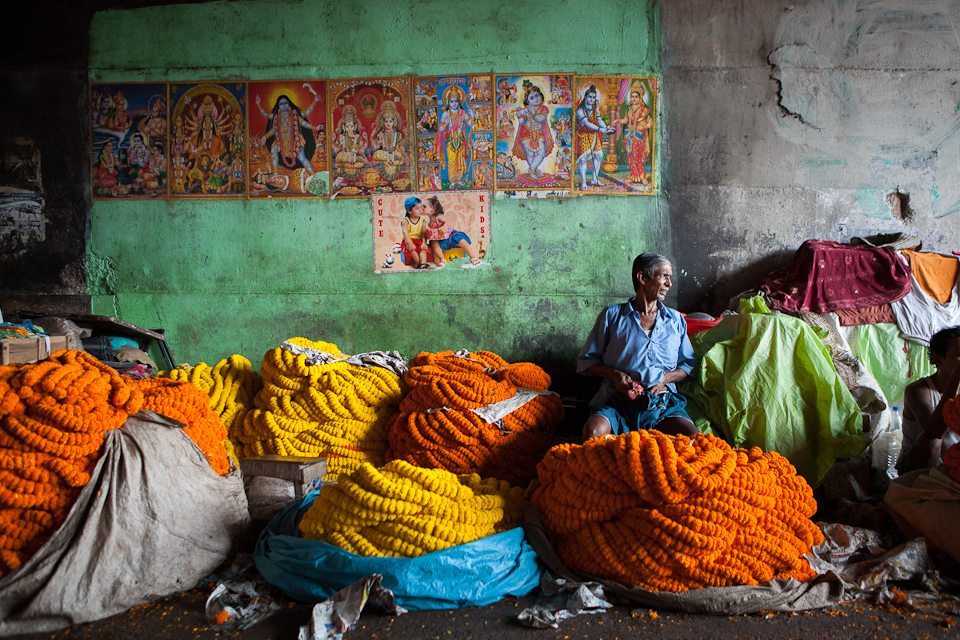
A man and his flowers, below a bridge in the flower market behind Howrah Station, Kolkata.
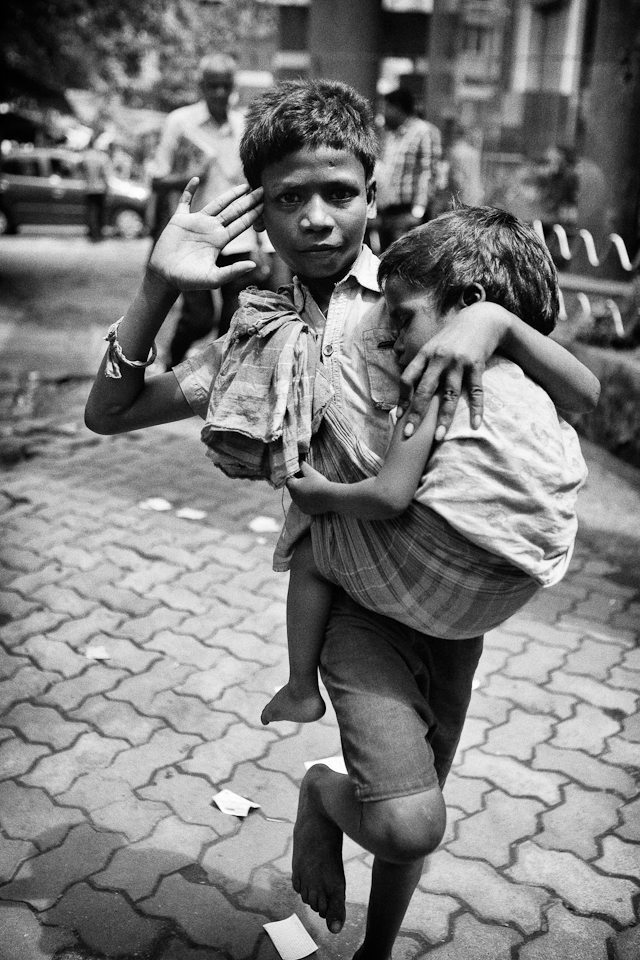
A child holding an even younger child strikes a pose on the streets of Kolkata
I am beginning to smell like the Indian people around me. I’m not sure if it is from the curry masala or from a general lack of hygiene.
Last night I bought a last minute train to Kolkata in the lowest class and thus I have learned that booking train tickets ahead of time is not always necessary. Rather than join the masses in the unreserved second class car, I boarded the 3 tier AC car. When the ticketman made is rounds, I gestured that I wished to upgrade and handed him 300 Rs. The resourceful ticketman managed to find me an empty berth a sold out train and I actually had a good nights sleep. This is one reason that it is at times critical that I be a solo traveler. Where I to board the train with even one more person, there is a good chance we wouldn’t find enough berths and we would be spending the night sitting with no place to lay down, or possibly not even finding a seat at all.
I am ready to be done with the cities of India. I am exited to find the quiet places. Perhaps it is the lack of good service which consistently irks me. It must not be in the culture – the concept is altogether foreign. Hotel staff, cabbys, and waiters often march to their own drum. On my way from Howrah station to downtown Kolkata my driver decided to pull over and take a 15 minute phone call while I baked in the cab. Tonight I am splurging on an 850 Rs air conditioned room.
I leave the cool air conditioned shelter of my room, having enjoyed it for only a precious five minutes, and descend the stairs into the hot streets of Kolkata where I meet Rajdeep and Paul. I contacted Paul because I found his work online when researching India. He has some fantastic street photography of Kolkata. I found Paul on Facebook and was glad when he offered to show me around Kolkata.
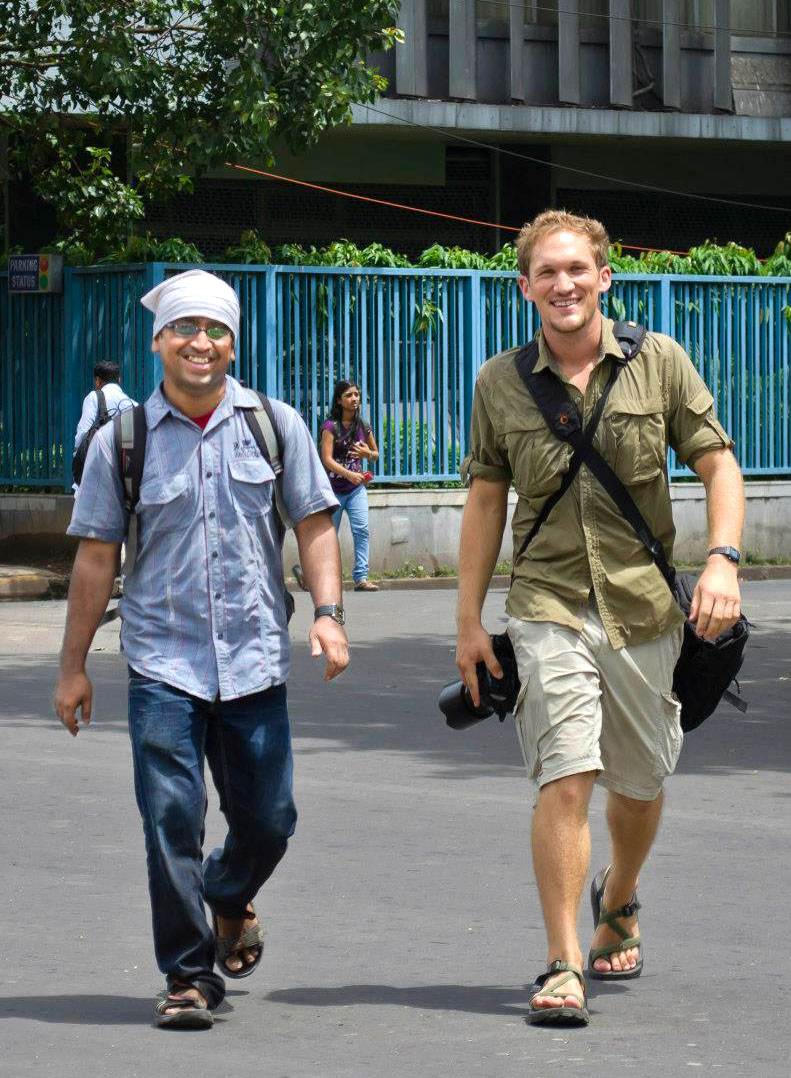
Paul Nilot and I, steppin’ out on the streets of Kolkata.
Photo Credit: Rajdeep Das
To cover ground quicker we hail one of the many bright yellow vintage styled taxis and head to Howrah station. Behind the station, Paul tells me, is the largest flower market in all of India. Paul and Raj are giddy with excitement, exclaiming that they never leave the market without a great “click.” They refer to photos as “clicks” in India.
We step out of the cab and stop at a small footbridge – “Are you ready?” says Paul, “Lets go…”
Crossing the bridge I leave the honking mess of cars behind, swapping sound waves for the hustle and bustle of the market. Flowers are everywhere. Men squat or sit on the ground next to large white open sacks overflowing with orange and yellow flowers. Filth and squalor mixed with vibrant color makes for moving images, and Paul frequents the place so often that many people are accustomed to being photographed. This is immensely helpful. We wander through old colonial buildings taken over and converted to a changing room for those who wish to bathe in the Ganges.
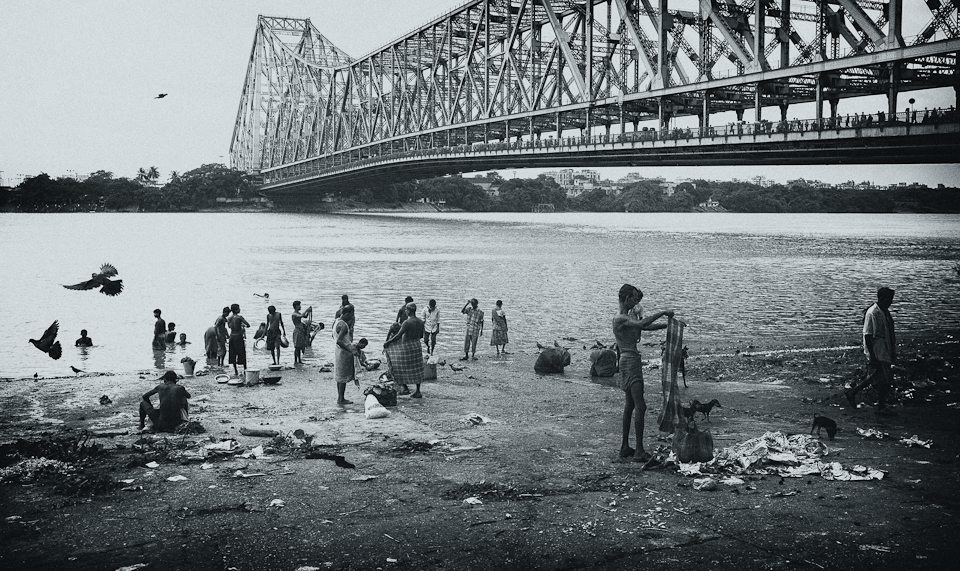
The people of Kolkata come to the banks of the holy Ganges to bathe.
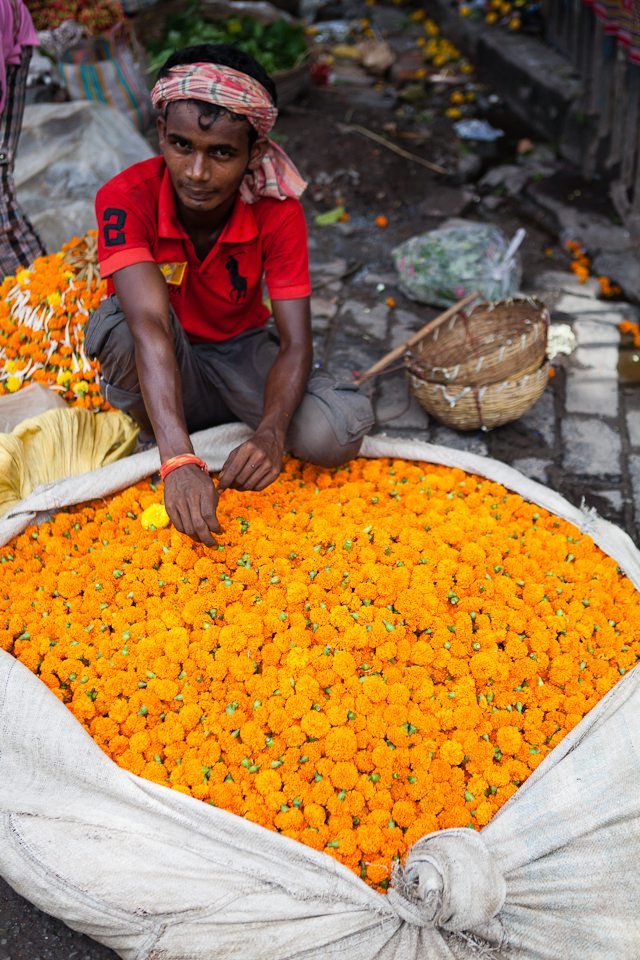
Giant sacks overflow with orange and yellow flowers to be used in prayer at the flower markets of Kolkata
The walkways through the old market are narrow and everyone is chomping at the bit to sell some flowers. Luckily for me, this is one of the few places where businessmen assume I am not interested in their wares. Why would an American want to buy flowers for Hindu prayer. In fact, after some initial stares, I am often ignored here because I represent a lack of capital interest and because I have my two Indian stewards.
The market is organized in lanes parallel to the Ganges, which lies just on the other side of some old colonial buildings. I cross the market and move towards the Ganges through an alleyway. In this alleyway the salesman have been replaced by the beggars and the homeless, by the sick and diseased. They are all reaching out to me for money, for food, for anything. One man in particular captured my gaze as he gestured towards me from behind a pair of dark wayfarer sunglasses.
This far side of the market, against the Ganges, is less about selling flowers and more about bathing in the holy water. This side is about children playing with kites and kicking balls, about lounging sadhus with a holy bull decorated in an assortment of flowers, and about washing clothes in the holy water. Some of the children are playing with a helicopter-like device which is thrown in the air and then spins down from the sky. To my surprise they not only chase each other to be the first to reach the fallen toy, they do somersaults and cartwheels to reach it.
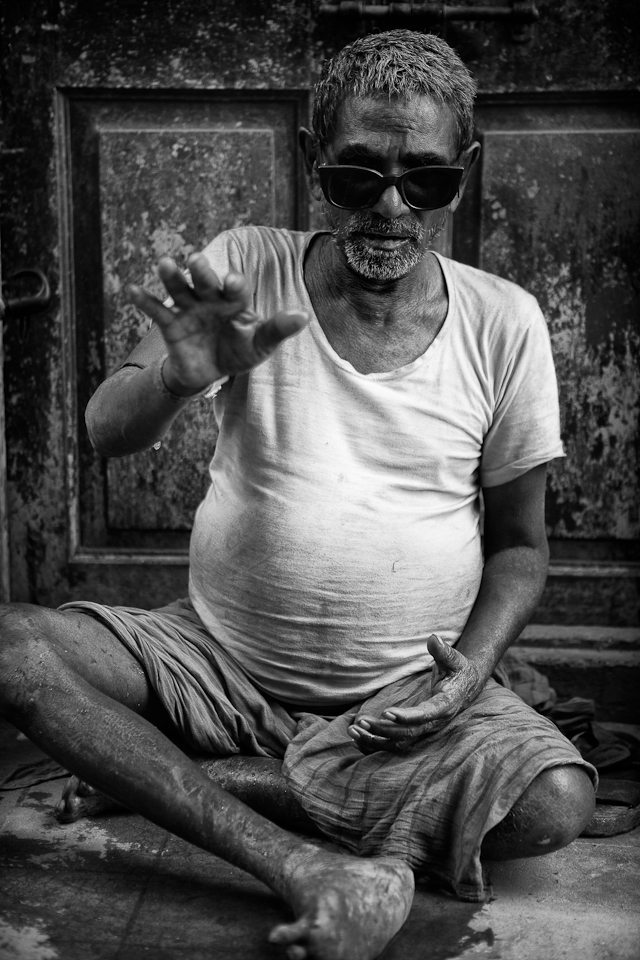
A man reaches out from behind his dark sunglasses in the streets of Kolkata.
The older children have outgrown this childplay and instead gather around a carrom board. One longer haired fellow with a wispy mustache is putting on a show, flaunting amongst his peers. Across the table his opponent, several years his junior and much smaller in stature, gazes on with a determined stare.
The market surrounds the old colonial building structure on the banks of the river. The colonial buildings are sometimes concrete based, sometimes constructed from cinder block, covered in peeling paint and city dirt. Their colonial inhabitants have been replaced by flower salesmen, open air changing rooms, and squatting sadhus. Branching away from the edifice are numerous shacks and stalls of the corrugated metal variety. Many are painted blue and even more are listing precariously to a side. The people are barefoot, often clothed in bright fabric and going about their business. Passing some alleyways I can see a television inside a dark room, presumably a family living area.
Paul knows these alleys like the back of his hand and brings me into a large open courtyard. Inside is an orange clad sadhu. Dreadlocks spill out from a headwrap as he lifts his hands and places them together in traditional greeting – “Namaste.” Paul refers to him fondly as Baba. He is a good sadhu and exclaims that real sadhus will never ask for coin in exchange for a photo. They’ve renounced their previous material life. Only beggars disguised as sadhus will demand payment.
Moving past Baba I pass an old man giving someone an ayurvedic massage. When I first arrive his is massaging someone’s head and when I leave, to my surprise, he is walking on the man’s back. I’ve been told that ayurvedic massage has incredible healing powers.
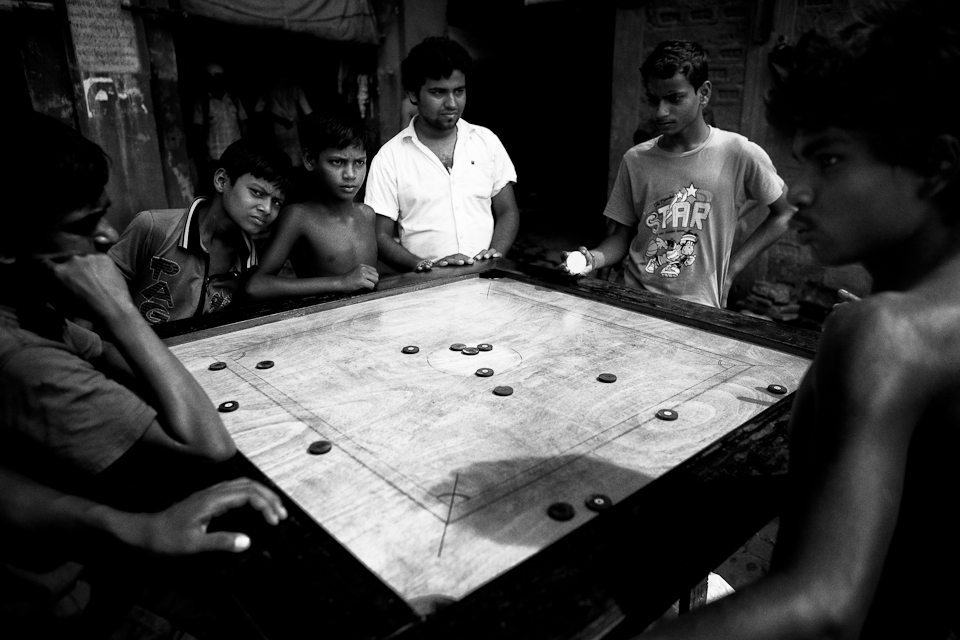
Hot shots gather at the carrom board in Kolkata, India.
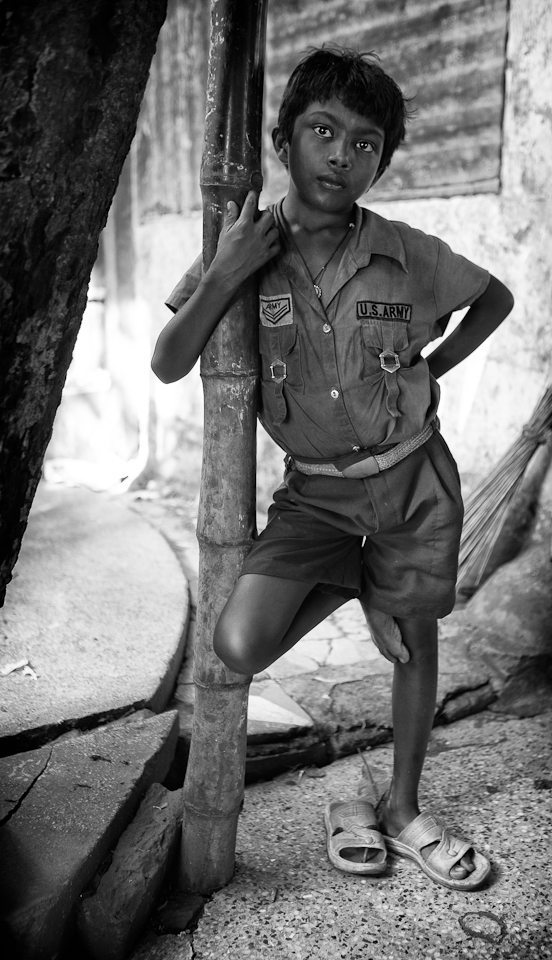
I keep moving, through a concrete doorway to an open area shelter on the outside of the building. An old man is sitting under a tree playing an instrument. On the other side of the path a young boy is watching me intently, with eyes full of curiosity. I’m curious too – he is wearing a military styled shirt that says “U.S. Army.” My nation is everywhere.
Under an overhang are sadhus in the shadows. They are newer, younger sadhus under the guidance of their guru, who sits regally to the side swathed in red fabric. he carries a large stick and sits in the lotus position and peacefully shows me his open palm. His young disciples are sitting in the dark corners and the youngest, clean shaven man is making chopati, slapping the dough between his hands before cooking it on his hot pan. Smoke from the cooking fire gives shape to the stray beams of light that peek through the corrugated metal roof and the open room has a dream-like quality.
The two young bearded sadhus have a sort of Robinson Crusoe/Castaway look to them because of their unkempt beards and flowing hair that has yet to form dreadlocks. They are surrounded by religious items and a young man tends to their shrine. The young sadhus are initially full of smiles but grow weary of our presence with our clicking cameras and Paul’s questions – it is time to go.
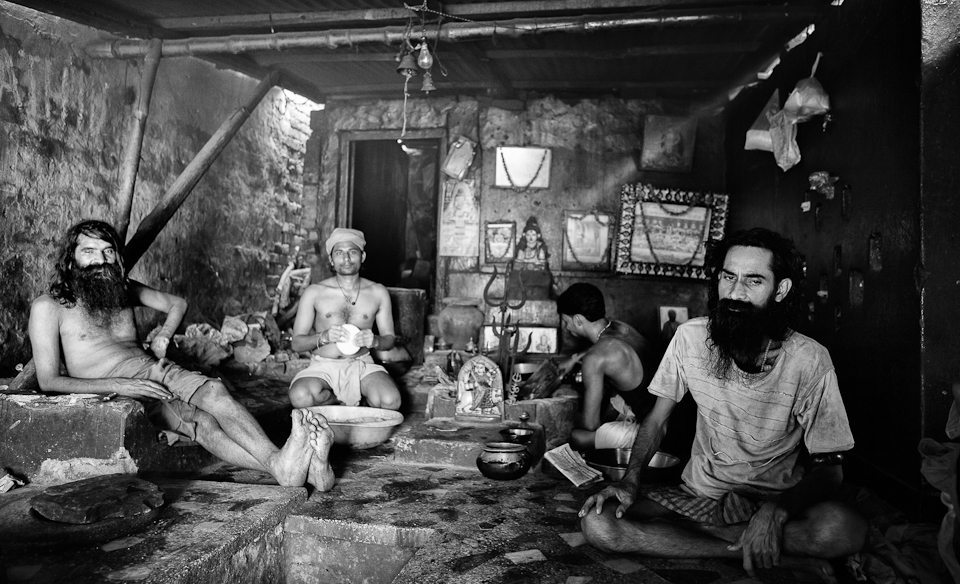
An auspicious area in the flower markets behind Howrah station, full of aspiring sadhus.
Paul, Raj, and I leave the heaps of marigolds and the sadhus and the Ganges and head back into the city to find the artist community that sculpts thousands of clay statues for the coming Durga Puja festival. But that’s another story…
Hot Streets of Kolkata: Part 2

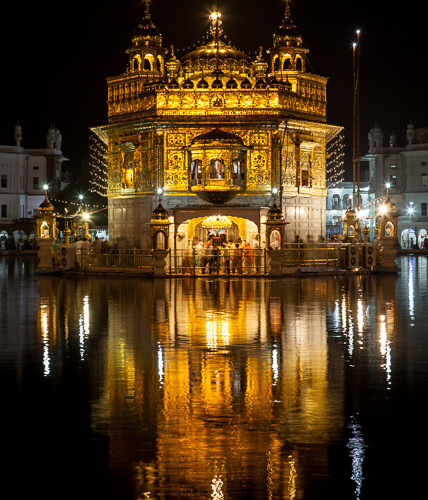
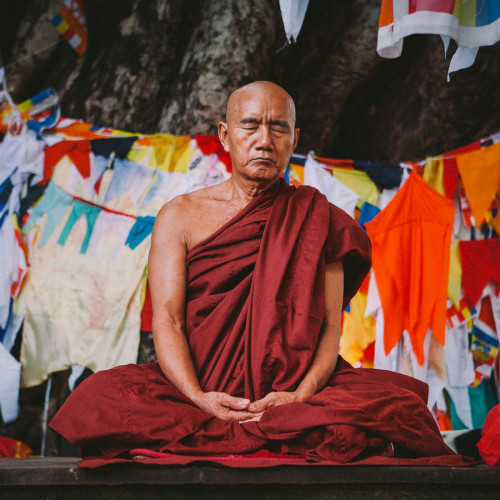
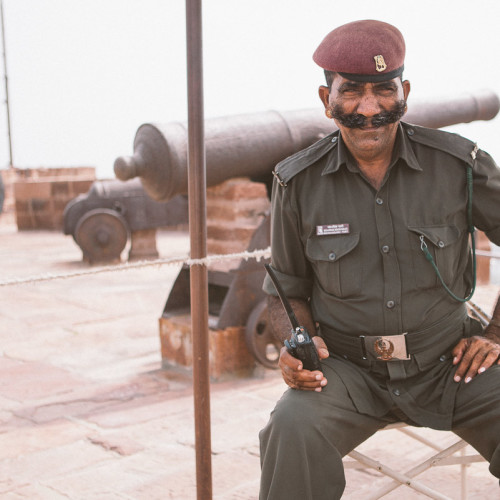
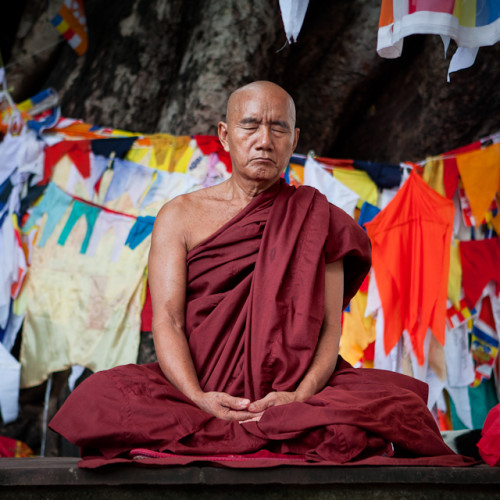
Leave a reply